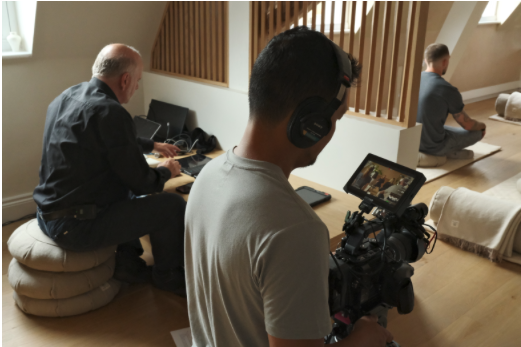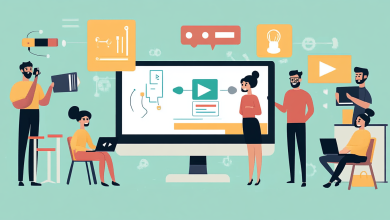
Public relations and marketing have always been driven by empathy, storytelling and cultural insight. At their core are timeless questions: What stories resonate with people? Who are we trying to reach? What sparks emotion, action, and loyalty? And most importantly, how do we stay relevant in the minds of our audiences?
While success in PR and marketing still depends on cultural fluency, creativity, and human insight, artificial intelligence is transforming how we answer these questions and execute campaigns. AI has become an indispensable part of the modern marketer’s toolkit: from writing captions and press releases to monitoring public sentiment and predicting audience behaviour.
But the growing presence of AI raises new questions: Can brands rely too much on automation? Will customers notice when content sounds robotic? How do we use our customers’ data ethically and keep them secure?
In this article, we take a look at the entire lifecycle of a campaign, seeing how AI slots into every bit of the process, and delving into both its potential and pitfalls.
Strategy: Media Monitoring and Sentiment Tracking
Every campaign begins with strategy. Before drafting a single post, sending out a press release or planning an event, a full and detailed brand audit needs to take place. This helps create an understanding of the brand’s current position, including its perception, competitors, and opportunities. This is where AI-driven media monitoring and sentiment analysis come in, forming a clear picture of the brand to base any communication or activation on.
AI tools can scan thousands of news articles, blogs, and social posts in real time, identifying key mentions and gauging whether the sentiment is positive, neutral, or negative. These tools offer valuable insights that help teams anticipate potential PR crises, seize opportunities, and build campaigns on solid, data-informed foundations.
However, AI isn’t foolproof. Sarcasm, slang, and cultural nuances are still challenging for algorithms to grasp. A joke might be flagged as a complaint, or an ironic comment misunderstood as praise. That’s why human interpretation remains essential, especially from PR professionals who deeply understand and are part of specific communities or industries.
Content Creation: Creating Effective Copy and Impactful Visuals
AI is transforming the way brands develop creative assets and content, helping streamline workflows and boost output across formats. From press releases and blog articles to email campaigns and social media captions, AI-powered tools can now assist with ideation, copywriting, tone adjustments, and SEO-optimised keyword suggestions.
Many of these tools also offer powerful personalisation features, allowing marketers to adapt headlines, product descriptions, and messaging to individual reader preferences at scale. This is particularly valuable for small or time-pressed teams, enabling them to produce more content with greater efficiency.
However, while AI can accelerate the content creation process, it still struggles with emotional nuance, voice, and authenticity. Drafts often lack the creative spark or subtlety needed to truly connect with audiences, and can come across as robotic or bland. AI may provide the bones of a message, but it’s the human touch that brings it to life. Marketers and PR professionals must refine the tone, add cultural context, and inject personality to make content resonate to audiences.
Visual content is also being shaped by AI. Today’s platforms can generate everything from branded images to video storyboards and social graphics within minutes. This makes testing concepts, producing mockups, or localising campaigns across different languages and regions much easier.
Still, as with written content, visual assets generated by AI can sometimes feel overly generic or lack originality. Without careful review, there’s a risk of producing visuals that blend in rather than stand out. Brands need to ensure that all content remains aligned with their identity, values, and voice.
Distribution: Smarter Targeting and Better Timing
Getting the message in front of the right audience is as important as crafting it. AI tools can analyse previous campaign data to predict the best times to post, recommend tailored messaging for different segments, and even help craft pitches that are more likely to appeal to specific journalists or outlets.
AI also makes A/B testing more powerful, helping teams trial different campaign versions and shift focus to the top performer automatically. This not only optimises performance but also ensures marketing budgets are used more efficiently.
Still, there’s a risk in relying too much on what the data says. AI tends to play it safe, and sometimes the most exciting marketing ideas come from human creativity and instinct. Data can guide strategy, but it shouldn’t replace bold thinking.
Final Thoughts: Ethics, Accuracy, and the Human Touch
AI is a powerful enabler in PR and marketing, but it’s not without its risks.
It raises important and valid concerns around accuracy, bias, misinformation and privacy. Not to mention, with the general public becoming more aware and suspicious of AI-generated content online, obvious use of AI can damage a brand’s credibility and erode trust.
Ethical, thoughtful use of AI requires human oversight from experienced PR and marketing professionals. Brands must ensure their AI tools are trained on diverse data, reviewed by people, and used with transparency. Disclosing when AI is involved, fact-checking claims, and avoiding stereotypes are all part of building responsible campaigns.
Ultimately, the best campaigns strike a balance: leveraging AI to enhance productivity and insight, while relying on human creativity, empathy, and ethics to make the work truly resonate.
AI isn’t here to replace marketers, it’s here to support them. And when used responsibly, it can elevate both strategy and storytelling to new heights.





